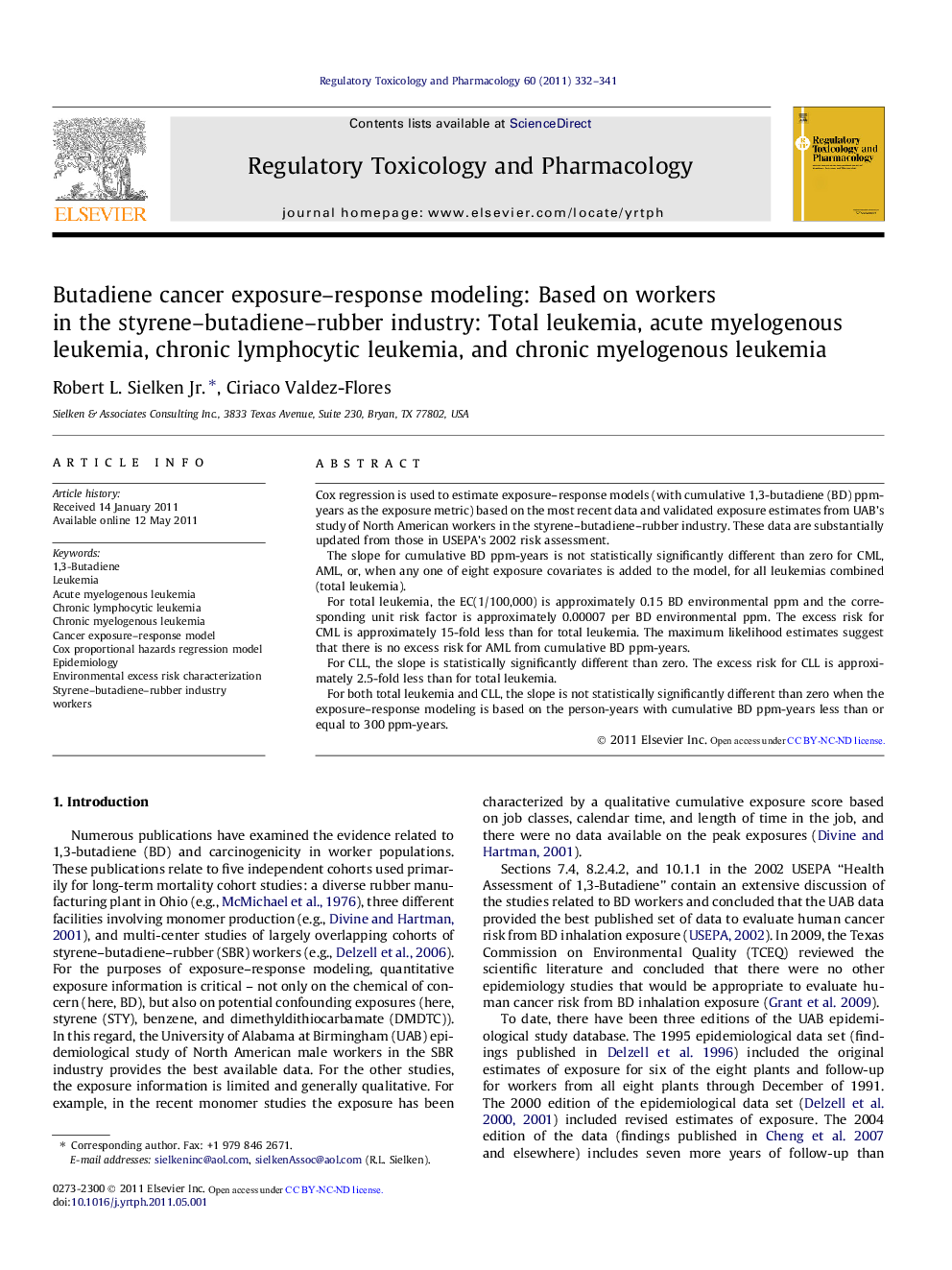| Article ID | Journal | Published Year | Pages | File Type |
|---|---|---|---|---|
| 5857552 | Regulatory Toxicology and Pharmacology | 2011 | 10 Pages |
Cox regression is used to estimate exposure-response models (with cumulative 1,3-butadiene (BD) ppm-years as the exposure metric) based on the most recent data and validated exposure estimates from UAB's study of North American workers in the styrene-butadiene-rubber industry. These data are substantially updated from those in USEPA's 2002 risk assessment.The slope for cumulative BD ppm-years is not statistically significantly different than zero for CML, AML, or, when any one of eight exposure covariates is added to the model, for all leukemias combined (total leukemia).For total leukemia, the EC(1/100,000) is approximately 0.15 BD environmental ppm and the corresponding unit risk factor is approximately 0.00007 per BD environmental ppm. The excess risk for CML is approximately 15-fold less than for total leukemia. The maximum likelihood estimates suggest that there is no excess risk for AML from cumulative BD ppm-years.For CLL, the slope is statistically significantly different than zero. The excess risk for CLL is approximately 2.5-fold less than for total leukemia.For both total leukemia and CLL, the slope is not statistically significantly different than zero when the exposure-response modeling is based on the person-years with cumulative BD ppm-years less than or equal to 300Â ppm-years.
⺠Exposure-response models are based on most recent data and validated exposure estimates from UAB study of styrene-butadiene-rubber industry. ⺠For leukemia, six exposure covariates significantly improve the model and each makes the slope per cumulative BD ppm-years not significant. ⺠For CLL, the slope per cumulative BD ppm-years is significant. For CML and AML, the slope is not statistically significantly different than zero. ⺠For leukemia and CLL, the slope is not significant when modeling is based on person-years with cumulative BD ppm-years less than 300 ppm-years. ⺠For leukemia and CLL, environmental EC(1/100,000)s are 0.15 and 0.375 ppm, respectively, (corresponding slopes of 0.00007 and 0.000027 per ppm).
